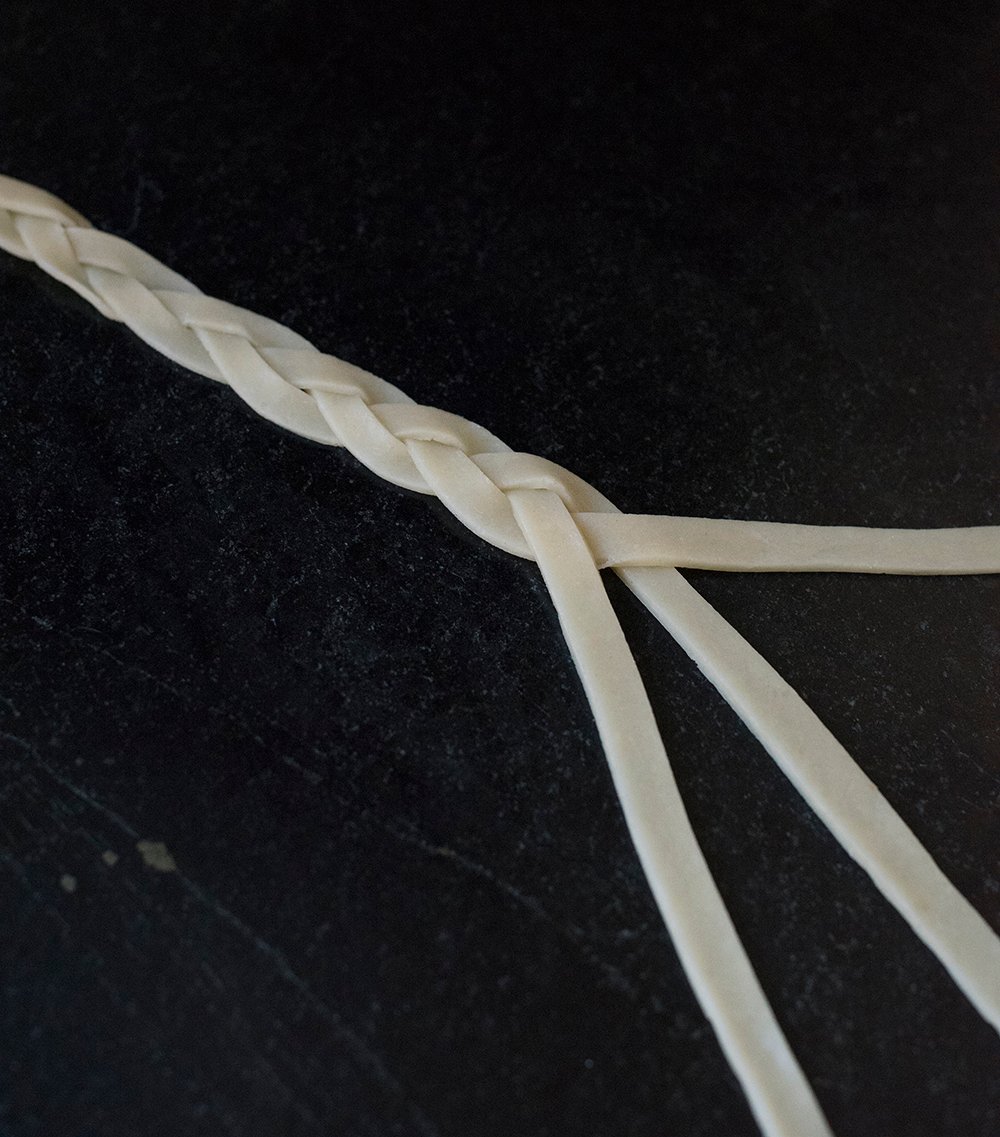

This design works best on thick, chunky fillings, or pie fillings that aren’t particularly liquidy.
#Braided lattice pie crust full#
There are a few options, lay down a full top crust and apply cut-outs, lay the cut-outs over an open-faced pie, along the edges, or some combination. Cut-out positive space Photo: Elena Veselova, ShutterstockĪlternatively to using the negatives, use the cut-out positives to create a pattern along the edge, or an attractive layered design. Crimp the edges to seal and egg wash the top. Once it’s set, egg wash the top edge of the bottom crust, slide the top crust off of the cutting board, and straight onto the pie filling. Create the design and chill the pie crust on a cutting board by putting it in the freezer for five or ten minutes. Once you’ve cut out as many shapes as you want, You can place the top crust on your pie with the help of the rolling pin or, for fragile designs, use the same technique mentioned above. Try making decorative polka dots, stars, cherries, or small apples.

Use cookie cutters, small biscuit cutters, or the end of a piping tip. Roll out a top crust, or unravel one from a box, and cut out a big shape, or take any sort of small cutter that you have to make a pattern.
#Braided lattice pie crust how to#
This is one of my favourite pie toppers because the only skill it takes is knowing how to stop before you make too many cut-outs. Egg wash in the same order of operations as the lattice crust, and enjoy your fancy plaid pie.Ĭut-out negative space Photo: igor kisselev, Shutterstock Place the strips in regular intervals and weave them. The plaid design only differs from a traditional lattice by cutting a few wide strips and several more thin strips, like in this pie’s main design. Make a plaid design using the same technique of weaving on a cutting board, and chilling it before transferring the crust to the pie. You like to put your own spin on things, or maybe the lattice crust is just slightly worn-out. If you don’t want to weave pastry, just do a lazy lattice. The lattice will be frozen together so it can move in one piece, and the flour underneath should allow for easy sliding. Take the lattice out of the freezer and slide the whole thing on top of the filled pie. This will help seal the lattice when it lands. Once your pie has been filled, the oven is preheated, and you’re just about ready to bake, egg wash the outer edge of the bottom crust.

Put the woven crust into the freezer for five minutes or so, until it firms up. Make sure there is a little flour under the lattice so it doesn’t stick to the cutting board, it needs to be mobile. Weave the crust strips on a cutting board or cardboard circle that is slightly larger than your pie’s top diameter. Cut the pie crust into strips, wide or thin depending on the look you’re going for. The easiest way to do a true woven lattice crust without the strips deteriorating into a sticky mess is to build the lattice off of the pie. A lattice pie will always be the standard for tempting and comforting. Try a snowflake pattern, a simple star pattern, or draw the fruit that’s in the pie filling. Make sure to egg wash first.) Using a sharp paring knife, or a serrated paring knife, cut slits all the way through the top crust. (If you do this after cutting the vents, it’s likely the egg will drip into the vents and seal them shut. Lightly egg wash the entire surface of the crust. Top the pie with a full sheet of flaky pastry. Before you start considering leaf designs and woven crusts, try arranging the vent slits in a decorative pattern. All pies give off steam in the oven and that steam needs to escape. Cutting decorative vents Photo: Derek Brumby, Shutterstockĭesigning your pie’s vents is simple and effective.


 0 kommentar(er)
0 kommentar(er)
